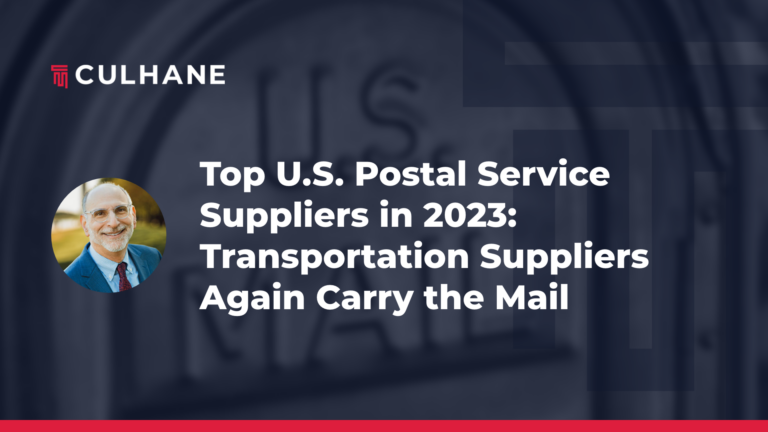Culhane Meadows’ New York partner Robert Kiggins recently authored an article for the January edition of The Journal of Taxation on Pillar II and the Organization of Economic Development’s plan for a global minimum income tax rate for multinationals.
Here are a few excerpts from the article:
The previous article discussed the Pillar One proposal. Since that article was written, the OECD
has made some fairly minor modifications to Pillar One in a Statement dated October 8, 2021.
…
Tax competition among nations has long been a concern in international income tax circles. Nations, in many cases, have been viewed as competing for businesses by offering very low or even zero rates of corporate income tax to attract businesses to them in what has been quoted in the media as remarks by U.S. Treasury Secretary Janet Yellen characterizing this behavior as a “race to the bottom.” The recent digitization of business has made it easier than ever for international businesses, also known as multinational enterprises (“MNEs”), to arrange their business affairs so as to have income from them taxed (or not taxed) in these low or no tax countries with relatively little exposure to income taxation elsewhere. All of this gave impetus to the OECD to look for a global multilateral solution to this issue. That proposed solution is called Pillar Two.
…
Basically, Pillar Two is designed to ensure that substantial MNEs pay a minimum level of tax no matter where they are headquartered or where they do business.
The elements of this are introduced in the Blueprint summary section and are worth setting forth, as now described by the OECD, here:
Pillar Two has the following high-level design for imposition of taxes:
• Two interlocking domestic rules (together the Global anti-Base Erosion Rules (GloBE) rules): (i) an Income Inclusion Rule (IIR), which imposes a top-up tax on a parent entity in respect to the low taxed income of a Constituent Entity; and (ii) an Undertaxed Payment Rule (UTPR), which denies deductions or requires an equivalent adjustment to the extent the low tax income of a Constituent Entity is not subject to tax under an IIR; and
• A treaty-based rule, the Subject to Tax Rule (STTR), that allows source jurisdictions to impose limited source taxation on certain related party payments subject to tax below a minimum rate. The STTR will be creditable as a covered tax under the GloBE rules.
…
There is a very important note in Chapter 1 of the Blueprint that certain parts of Pillar Two can “only be implemented through changes to existing bilateral tax treaties.”
As previously discussed in footnote 3, supra, regarding similar issues with Pillar One, while a two-thirds vote of approval in the Senate, which is normally required to make tax treaty changes, seems unlikely, the Biden administration is exploring if other options can be used to resolve this roadblock.
…
There was also discussion of how Pillar Two would coordinate with the U.S. Global Intangible Low Taxed Income (“GILTI”) rules. It was noted that GILTI could give rise to higher effective tax rates above the Pillar Two GloBE minimum rate. For example, U.S. House Ways and Means proposals had provided a top corporate marginal tax rate for GILTI of 16.56%, which is above the 15% Pillar Two minimum GloBE rate. Recently, it has been reported that when a proposed 5% foreign tax credit haircut is factored in, the effective GILTI rate is 17.4%.16 This would likely bite even harder for affected U.S. companies since, under the so-called country-by-country reporting being proposed for GILTI, an affected corporation could not avoid GILTI tax being due on income from a low taxed country by offsetting credits for excess taxes paid to a high tax country. Still, this proposed GILTI rate is lower than in the Biden Administration’s proposals of early 2021. That being said, much of the domestic U.S. legal element of this minimum tax issue remains uncertain at this time. On the foreign side, a reported Australian stance on GILTI as being inconsistent with their own tax rules has led some to think that this could result in double taxation.
…
There is a lot of work for the OECD to do on Pillar One and Pillar Two and completion of this work is now not scheduled to be finished until the end of 2022.
As to Pillar One, the fate of Amount B seems to be getting some attention, but the current deadline for completion of the end of 2022 is still a ways off and there may be many changes and refinements to Amount B in that time. Another large issue is what kind of mechanism will be put in place to avoid double taxation
under Pillar One, for example, how will paying jurisdictions be defined. Additionally, the marketing and distribution safe harbor for Pillar One needs to be fleshed out.
Perhaps the Pillar One issue worthy of special mention is the issue of the elimination of Digital Services Taxes (DSTs). This elimination has now essentially been agreed to in a deal recently reached by the U.S., U.K., France, Italy, Spain, and Austria, but it would seem that all bets may be off for U.S. MNEs if the U.S. does not itself enact Pillar One by the end of 2023.
…
As to Pillar Two, there are also quite a few open issues. A very prominent issue that remains unresolved for Pillar Two is how and if the U.S. GILTI rules, in such form as they may take, will coordinate with Pillar Two. The methodology for calculation of the ETR and allocation of UTPR also may still be open for discussion.
Finally, criticism continues that both Pillar One and Pillar Two provide wiggle room for MNEs and taxing jurisdictions to unfairly (if legally) game the rules. However, given the adoption of Pillar One and Pillar Two by 136 members of the Inclusive Framework on October 8, 2021, there now seems to be considerable global momentum behind them.
So, while much of the world at large, and the Biden administration, may well be on board, the fate of Pillar One and Pillar Two here in the U.S. would seem to be in the hands of the Congress.
About Culhane Meadows – Big Law for the New Economy®
The largest woman-owned national full-service business law firm in the U.S., Culhane Meadows fields over 70 partners in eleven major markets across the country. Uniquely structured, the firm’s Disruptive Law® business model gives attorneys greater work-life flexibility while delivering outstanding, partner-level legal services to major corporations and emerging companies across industry sectors more efficiently and cost-effectively than conventional law firms. Clients enjoy exceptional and highly-efficient legal services provided exclusively by partner-level attorneys with significant experience and training from large law firms or in-house legal departments of respected corporations. U.S. News & World Report has named Culhane Meadows among the country’s “Best Law Firms” in its 2014 through 2022 rankings and many of the firm’s partners are regularly recognized in Chambers, Super Lawyers, Best Lawyers and Martindale-Hubbell Peer Reviews.
The foregoing content is for informational purposes only and should not be relied upon as legal advice. Federal, state, and local laws can change rapidly and, therefore, this content may become obsolete or outdated. Please consult with an attorney of your choice to ensure you obtain the most current and accurate counsel about your particular situation.








